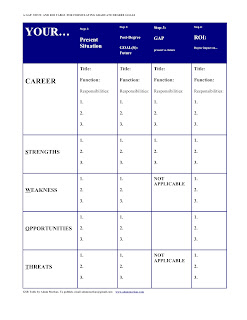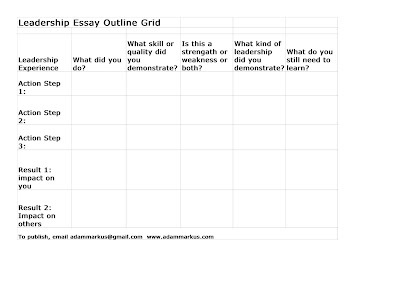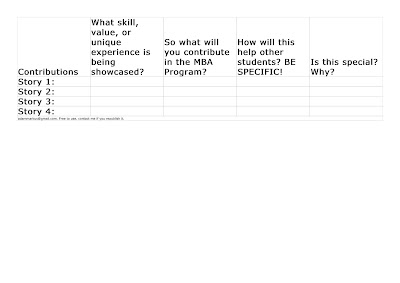Kellogg 2009-2010 MBA Essay Questions
Jul, 29, 2009
Categories: Admissions Consulting | application | Essays | Kellogg | MBA | MBA留学
In the post, I analyze Northwestern University’s Kellogg School of Business 2010 Application Essay Questions for the MBA and MMM programs. I have taken the questions from Kellogg’s website.
The
Northwestern University is located in an affluent community with a large number of bars, a wide variety of restaurants, nice shopping (but not for books!), and, just for the record, a great dog beach (Evanston residents can use it for free, but my brother, a resident of the City of Chicago pays $100
a year for his dog’s permit).If you go to Kellogg, chances are extremely high that you will live in
Our students collaborate in the classroom (and outside it) to meet professors’ exacting standards. They organize conferences, chair student groups and invite distinguished leaders to speak on campus. They travel to nations around the world to complete coursework of their own design.
At Kellogg, you’ll form lasting social, intellectual and professional bonds with your classmates.”
(To best view the following table, click on it.)

How to use this table:
Step 1. Begin by analyzing your “Present Situation.” What job(s) have you held? What was/is your functional role(s)? What was/are your responsibilities?
Next, analyze your present strengths and weaknesses for succeeding in your present career. REMEMBER: WHEN YOU ARE THINKING ABOUT YOUR STRENGTHS AND WEAKNESS DON’T ONLY THINK ABOUT WORK, THINK ABOUT OTHER ASPECTS OF YOUR LIFE. In particular, some of your greatest strengths may have been demonstrated outside of work, so make sure you are accounting for them.
Strengths: What are you good at? Where do you add value? What are you praised for? What are you proud of?
Weakness: What are you bad at? What are you criticized for? What do you try to avoid due to your own limitations? What do you fear?
Next, analyze the environment you work in right now. What opportunities exist for your growth and success? What threats could limit your career growth?
Step 2. Now, do the same thing in Step 1 for your “Post-Degree” future after you have earned your graduate degree. IF YOU CANNOT COMPLETE STEP 2, YOU HAVE NOT SUFFICIENTLY PLANNED FOR YOUR FUTURE and therefore you need to do more research and need to think more about it.
Step 3. If you could complete step 2, than you should see the “Gap” between your present and your future. What skills, knowledge, and other resources do you need to close the gap between your present and future responsibilities, strengths, and opportunities?
Step 4. After completing Step 3, you now need to determine how an MBA will add value to you. It is possible that an increased salary as a result of job change will be sufficient “ROI” for the degree to justify itself, but you should show how a degree will allow you to reach your career goals. How will the degree enhance your skills and opportunities and help you overcome your weaknesses and external threats? If you can complete Step 4 than you should be ready to explain what your goals are, why you want a degree, and the relationship between your past and future career, as well as your strengths and weaknesses.
The above table will also help you answer such common interview questions as: Where do you want to work after you finish your degree? Why do you want an MBA (or other degree)? What are you strengths? What are your weaknesses? What are your goals? Thinking about these issues now will help you to develop a fully worked-out strategy for how you will best present yourself both in the application and in an interview.
WHY KELLOGG?
One very strong point of Kellogg is that it can be used for a great variety of purposes and offers a very flexible curriculum. The downside to this is that many applicants just see the options, but don’t focus enough on what they need from Kellogg. Going through a formal process like the one I have outlined above will help you determine what you really need from Kellogg. The more specific you are about that, the better. Japanese applicants to Kellogg, should most certainly make full use of http://www.kelloggalumni.jp/kellogg_life/.
GOALS
You need to make admissions excited about your future. To do so, you should think about whether your goals are compelling. Admissions committees ask applicants to write about their goals after graduate school, but can applicants actually know what will be on the cutting-edge in two or three years? While many applicants will be able to successfully apply with relatively standard goals (“I want to be a consultant because…”), try to go beyond the typical answer to make your goals compelling.
Be informed. Admissions needs to believe you know what you are talking about. If you are changing careers, no one expects you to be an expert, but you should come across as having a clear plan based on real research into your future. If you are planning on staying in your present industry, you should be well informed not only about the companies you have worked for, but about the industry as a whole. If you are not already doing so, read industry related publications and network.
Those who are changing fields should most certainly read industry related publications in their intended field. Think about conducting informational interviews with at least one peer-level and one senior level person in that field. Conduct a peer-level interview to get a good idea of what it would be like to actually work in that industry. Conduct a senior-level interview to get the perspective of someone who can see the big picture and all the little details as well.
Don’t know anyone in your intended field? Network! One great way to start is through LinkedIn. Another is by making use of your undergraduate alumni network and/or career center.
LEARN WHAT IS HOT. No matter whether you are changing fields or not, learn what is hot now and try to figure out what will be hot by the time you graduate. Now, of course, this is just a plan and chances are that what is hot in your industry or field now may very well be cold in the future. The point is to come across to Wharton as someone who is not only well informed, but who has CUTTING-EDGE knowledge related to their goals. Some great general sources for learning what is hot:
From the Business Schools: Feed your brain with cutting-edge ideas from the best business schools in the world. Start with Kellogg Insight. Other great sources of information include Stanford Social Innovation Review, Harvard Working Knowledge, Harvard Business Review, Harvard Business School Publishing, University of Chicago GSB’s Working Papers, The University of Chicago’s Capital Ideas, Knowledge @ Wharton, and MIT Sloan Management Review.
You may also want to do a search on iTunes for podcasts: My favorites are Entrepreneurial Thought Leaders (from the Stanford School of Engineering, but totally relevant to the GSB), Chicago GSB Podcast, Net Impact, and Harvard Business IdeaCast. INSEAD, IMD, LBS, and Wharton also have podcasts. Kellogg, as far as I can tell, has no podcasts.
LinkedIn Answers: I would suggest that everyone join LinkedIn and make use of LinkedIn Answers. LinkedIn Answers is a great way to tap into cutting edge expertise (including my admissions advice!) Follow LinkedIn’s rules and you will often be able to obtain excellent information.
Hoovers: For information about specific companies, Hoovers is just a great way to learn about key facts including competitors (a very useful way of knowing who else you might want to work for and to learn about an industry). While primarily focused on the US, Hoovers does have listings for companies worldwide.
Vault: For scope of coverage, this site is a must. Vault includes both career and admissions information. It includes both company specific and industry-wide information.
Other sources: Read magazines, websites, and books that relate to your intended field.
CAREER PROGRESS
I think describing one’s career progress is something many applicants actually have a great deal of difficulty with. The primary reason is that they don’t actually think strategically enough about what they say about themselves. Interpret your career to connect it to your goals and why you want to go to Kellogg. Your resume will provide Kellogg with a description of your career, but in this essay help them understand what it means by interpreting your career for them.
When you initially write Essay 1, you might find that it does not seem to be coming together as a single essay. If that is the case, you might simply not be telling your story in the right way. The way you tell your story will depend on your situation. Applicants with extensive experience whose goals connect directly to their past experience will be telling a story based on continuity, while applicants looking to change careers will be telling a story based on discontinuity. A story based on continuity is often easiest to tell in a fairly linear way because the future is based directly on what happened in the past. By contrast, a story based on a discontinuity should be told to emphasize the need for the change In either case, it is critical to explain why you want an MBA or MMM from Kellogg.
I have developed the following grid to help you outline leadership stories. The categories this grid employs may go beyond any particular schools essay requirements. Filling it out completely will help you write about your leadership in a way that will help convince admissions of your leadership potential.
 CLICK TO ENLARGE.
CLICK TO ENLARGE.
How to use the grid:
1. Decide on a specific story.
2. Identify the most significant things you did in the situation, these are you action steps.
3. For each action step identify:
- What skills or qualities you demonstrated to complete this step.
- The strengths you demonstrated to complete this step.
- The kind of leadership you demonstrated.
- What you still need to learn about leadership.
4. Think about the results and identify how they relate to your action steps. So, at minimum, you should be able to state the impact on others and/or yourself.
5. After completing the chart you will see that some aspects of your action steps may be repeated. If there is a total duplication and nothing new is shown, either you need to redefine the action step or you may decide not to focus on it very much.
6. Once you think you have two to four fully worked-out action steps for two to three stories, start writing your essay.
7. Next start re-writing. Eliminate duplicate points made between action steps. Make choices about what parts of each action to step to highlight. Given that there are usually word limits, you will have to make some decisions about what to include. Simply providing a description of your actions, is not enough. Consider what it signifies about you. Consider what your actions reveals about your leadership potential.
8. Make sure that each story focuses on a different aspect of leadership. By all means, make sure that at least one of your leadership experiences relates to teamwork.
THE HARDEST PART OF THIS QUESTION: “evaluate what leadership areas you hope to develop through your MBA experiences”
Based on working with a number of clients on this question, including four who were admitted into the Class of 2009, I can say that evalauating what leadership areas you need to develop is actually the hardest part of the question for most people. Once.
Finally, thinking and writing about leadership is an important part of preparing for interviews because you can be certain that you will have to talk about leadership. So, you might find that the parts of the outline you jettison now will become valuable when you will want to have alternative stories for your Kellogg interview.
This is a new question that combines the function of the standard contribution question that Kellogg had previously asked for many years with a variation of an old Kellogg on evaluating your application as though you were a member of the admissions committee (the old question did not specify it was a student).
One of the chief functions of an MBA admissions committee is to select people who will be good classmates. The director and the rest of the committee have done their job properly if they have selected students who can work well together, learn from each other, and if these students become alum who value the relationships they initially formed at business school. Students members of the committee bring a peer’s perspective to the process. They are also are likely to be the first to read your file:
“Files are typically reviewed first by a student member of the admissions committee, then forwarded for additional review by staff members, including the Director of Admissions.”There are a number of ways of trying to determine whether someone really “fits” at a particular school, but certainly the most direct thing to do is just ask. One way they ask is by asking applicants why they want to attend as in Essay 1 or in terms of what leadership skills need to be improved as in Essay 3. Another way is to ask applicants what they can contribute.

CLICK ON THE ABOVE TO ENLARGE.
I use the above matrix for all types of contribution questions, modifying the categories to fit the question. When it comes to contribution questions, I think it is important to tell specific stories that highlight specific ways you will add value to your future classmates. Luckily, Essay #3 specifies that you should be looking only for those aspects of your application that really best demonstrate why you should be a part of the Kellogg community.
Re-applicants have the option to answer a question from this grouping, but this is not required.
a) Describe a time when you had to make an unpopular decision.
b) People may be surprised to learn that I….
c) I wish the admissions committee had asked me……
It is also important that each action step reveal something distinct about you: The way you think, the way you interact with others to solve problems, your communication skills, or other abilities or qualities. This essay will become very boring if you simply focus on the details and not your underlying capabilities.
By all means avoid making this merely an essay focused on action. You really should provide admissions with a deep understanding of the way you conceptualize and make decisions. Think of this as an opportunity to analyze how you make difficult decisions, not merely as a description.
b) People may be surprised to learn that I….
I only suggest answering this one if you actually have something surprising to discuss. I actually like this question quite a bit because it is a great way for applicants to highlight something really unique about themselves. The point is that it should be something that would not be obvious about you. The focus may be on something very specific that you did or something about your character. Whatever it is, it should not simply be surprising, but also relevant. It should be something that will add value to you as student at Kellogg and/or to your future career.
Questions? Write comments or contact me directly at adammarkus@gmail.com.
Please see my FAQ regarding the types of questions I will respond to. Before emailing me questions about your chances for admission or personal profile, please see my recent post on “Why I don’t analyze profiles without consulting with the applicant.” If you are interested in my graduate admission consulting services, please click here.
-Adam Markus
アダム マーカス
カウンセリング コンサルティング MBA留学 ビジネススクール ケロッグ
